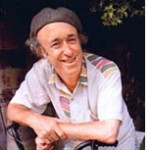Professor Siobhan Carroll is teaching a 19th Century "cli-fi" class this semester at the University of Deleware -- at the graduate level. This week: ''Mary Shelley and the Anthropocene.'' on Twitter for info and details.
College classrooms go 'cli-fi' as academia wakes up to rising new literary genre
 Siobhan Carroll is an Assistant Professor at the University of Delaware, specializing in British literature from 1750 to 1850 and in modern fantasy and science fiction. This spring semester she is teaching a graduate level class on what might be termed cli fi literature of the 19th Century, with this weeks working class title MARY SHELLEY AND THE ANTHROPOCENE
Siobhan Carroll is an Assistant Professor at the University of Delaware, specializing in British literature from 1750 to 1850 and in modern fantasy and science fiction. This spring semester she is teaching a graduate level class on what might be termed cli fi literature of the 19th Century, with this weeks working class title MARY SHELLEY AND THE ANTHROPOCENE
Five Questions: Siobhan Carroll on An Empire of Air and Water

Siobhan Carroll is an
Assistant Professor at the University of Delaware, specialising in British literature from 1750 to 1850 and in modern fantasy and science fiction. In the past couple of years, she has published articles on Mary Shelley in the
European Romantic Review and on Neil Gaiman in
Extrapolations, but her larger project has been a wide-ranging examination of the relationship between literature, science and exploration in the late eighteenth and early nineteenth centuries, paying particular attention to the ways in which the geographies of extreme spaces have been configured and imagined. The culmination of this project is her new monograph,
An Empire of Air and Water: Uncolonizable Space in the British Imagination, 1750-1850, which will be published this month by the University of Pennsylvania Press and which we discuss below. The introduction can be read
here.
1) How did you first become interested in atopias (defined in your introduction as ‘”real” natural regions falling within the theoretical scope of contemporary human mobility, which, because of their intangibility, inhospitality, or inaccessibility, cannot be converted into the locations of affective habitation known as “place.”‘)?
It emerged from a chance remark I made to
Pat Brantlinger at Indiana University. We were discussing how the British narrated imperial history.
Thinking of the Shackleton and Scott stories I’d consumed as a child I said, “Of course, to the Brits the North & South Poles were the ultimate imperial spaces.”
He said, “Really? Why?”
And that’s where this project began – in an attempt to answer that question.
I soon noticed my primary sources grouping together the poles with other unusual spaces. Poems like Byron’s
The Island would make sure to establish a captain’s polar ambitions before turning to the ocean and to caverns. Newspapers and geographical textbooks would pay tribute to the poles, caverns, the ocean and the atmosphere before turning to the English countryside. I felt I was starting to get a handle on the poles – Jen Hill’s and Adriana Craciun’s work proved very helpful in thinking through the way polar space constructed British imperial character – but I wanted to know how the poles related to these other geographies. What brought them together in the British imagination? And what kind of cultural work were they performing?
For me, the answer began to turn on the issue of habitation. I learned that none of these geographies – including caves – were considered permanently habitable. At best, they could serve as temporary refuges when your nation cast you out, but sooner or later you would have to return to green, arable land in order to build a home. Edward Said famously said that discussions of imperialism are discussions of habitation. But I was looking at evidence that spaces imagined as not only uninhabited but as *forever* uninhabited – spaces that would permanently resist the empire’s colonizing projects – were playing important roles in defining the British Empire.
Eventually I started using the term “atopia” to discuss these regions – geographies that could never be converted into dwellings. Essentially, I argue that Britons used these sites to define the empire: to set its limits, to establish their national character, and to “prove” their right to dominate more hospitable geographies and peoples. At the same time, in imagining a site as an atopia, Britons were also telling themselves that (to borrow a phrase from Rosalind Williams’s new book) the “triumph of human empire” was impossible. Our twenty-first century attempts to comprehend climate change and ocean acidification struggle against this cultural conceit.
2) An Empire of Air and Water examines the poles, the sea, the air and underworlds, with a conclusion on the unknown spaces of the labyrinthine nineteenth-century city. What lead you to select these particular foci, and were there other types of space, such as wildernesses, deserts or mountains, which you considered including?
I looked at each of them. “Wilderness” I dismissed because (in most discourses) it’s not atopic. Yes, it’s an extreme space, and yes, you can die in it, but it is improvable. Turner’s frontier will advance, this hostile line of trees will be cleared, and you’ll build yourself a nice little town on the spot where a bear once ate your parents.
Mountains and deserts were trickier. I found the habitable/uninhabitable lines harder draw with those spaces, and they were often treated differently in my primary sources. Mountains, for example, were imagined as known and mapped even if nobody had ever climbed them – because they performed the political function of serving as “natural borders” between nations. Deserts I would have liked to have tackled had I had more time, but my sense is that they became more important to the British imperial imagination in the later nineteenth century. I’ve got an article on the backburner about deserts in the Siege of Khartoum that may well turn a postscript for this project.
2) Your book focuses on the Romantic Century (1750-1850). How did you come to decide that this span would be the most suitable for your study, as opposed to one extending earlier or later or one which covered a smaller or larger chronological range?
The book does engage with texts and topics falling outside that date range: it’s hard to describe the cultural operations of these spaces without mentioning works like Dickens’s
The Frozen Deep or Conrad’s
Heart of Darkness! But in conceptualizing the project as a whole, the “Romantic Century” seemed to truly capture a period of intense transformations in how people thought about the globe.
D’Anville’s 1749 map of Africa popularizes the idea that there are “blank spaces” that European empires should probably do something about, while the Great Exhibition of 1851 asserts the British Empire’s ability to not only know but also to spatially organize the diverse circulations of the world.
4) Which primary and secondary texts proved the most crucial for you in shaping your research on uncolonisable spaces?
Mary Shelley’s
Frankenstein and
The Last Man both proved enormously important for me –
Frankenstein because it marks a definitive break in the tradition in polar narratives up until that point, and
The Last Man because it’s uncannily prescient in imagining the human race facing a global environmental disaster that might be of its own making. I might go so far as to call it the first novel of the
Anthropocene.
As for secondary texts – there were so many inspiring scholars whose work I read and whose arguments helped shape my own. Edward Said, Henri Lefebvre, Benedict Anderson, and Marc Augé proved essential touchstones for me in formulating my arguments. In British scholarship, the work of scholars like Tim Fulford, Alan Bewell, and Saree Makdisi provided an important foundation for the way I was thinking about exploration in the Romantic Century. And then there are scholars like Margaret Cohen, Sam Baker, Lauren Benton, and Adriana Craciun, who published works that helped me solve particular problems in the later stages of this project.
5) What new projects are you currently working on?
In researching
An Empire of Air and Water I came across a lot of material on nineteenth-century geo-engineering projects that proposed doing things like attacking the poles in order to change the global climate. One 1860s American proposal suggested reversing the current of the Gulf Stream in order to destroy the British Empire. (That’ll teach them!) My next project takes these schemes of “extreme improvement” as a starting place for its investigation into how Britons and Americans conceptualized human agency in relation to air, water, and plant circulations. It’s tentatively titled
Circulating Natures: Planetary Politics in the Transatlantic Imagination.
In the past couple of years, she has published articles on Mary Shelley in the
European Romantic Review and on Neil Gaiman in
Extrapolations, but her larger project has been a wide-ranging examination of the relationship between literature, science and exploration in the late eighteenth and early nineteenth centuries, paying particular attention to the ways in which the geographies of extreme spaces have been configured and imagined. The culmination of this project is her new monograph,
An Empire of Air and Water: Uncolonizable Space in the British Imagination, 1750-1850, which will be published this month by the University of Pennsylvania Press and which we discuss below. The introduction can be read
here.
1) How did you first become interested in atopias (defined in your introduction as ‘”real” natural regions falling within the theoretical scope of contemporary human mobility, which, because of their intangibility, inhospitality, or inaccessibility, cannot be converted into the locations of affective habitation known as “place.”‘)?
It emerged from a chance remark I made to
Pat Brantlinger at Indiana University. We were discussing how the British narrated imperial history.
Thinking of the Shackleton and Scott stories I’d consumed as a child I said, “Of course, to the Brits the North & South Poles were the ultimate imperial spaces.”
He said, “Really? Why?”
And that’s where this project began – in an attempt to answer that question.
I soon noticed my primary sources grouping together the poles with other unusual spaces. Poems like Byron’s
The Island would make sure to establish a captain’s polar ambitions before turning to the ocean and to caverns. Newspapers and geographical textbooks would pay tribute to the poles, caverns, the ocean and the atmosphere before turning to the English countryside. I felt I was starting to get a handle on the poles – Jen Hill’s and Adriana Craciun’s work proved very helpful in thinking through the way polar space constructed British imperial character – but I wanted to know how the poles related to these other geographies. What brought them together in the British imagination? And what kind of cultural work were they performing?
For me, the answer began to turn on the issue of habitation. I learned that none of these geographies – including caves – were considered permanently habitable. At best, they could serve as temporary refuges when your nation cast you out, but sooner or later you would have to return to green, arable land in order to build a home. Edward Said famously said that discussions of imperialism are discussions of habitation. But I was looking at evidence that spaces imagined as not only uninhabited but as *forever* uninhabited – spaces that would permanently resist the empire’s colonizing projects – were playing important roles in defining the British Empire.
Eventually I started using the term “atopia” to discuss these regions – geographies that could never be converted into dwellings. Essentially, I argue that Britons used these sites to define the empire: to set its limits, to establish their national character, and to “prove” their right to dominate more hospitable geographies and peoples. At the same time, in imagining a site as an atopia, Britons were also telling themselves that (to borrow a phrase from Rosalind Williams’s new book) the “triumph of human empire” was impossible. Our twenty-first century attempts to comprehend climate change and ocean acidification struggle against this cultural conceit.
2) An Empire of Air and Water examines the poles, the sea, the air and underworlds, with a conclusion on the unknown spaces of the labyrinthine nineteenth-century city. What lead you to select these particular foci, and were there other types of space, such as wildernesses, deserts or mountains, which you considered including?
I looked at each of them. “Wilderness” I dismissed because (in most discourses) it’s not atopic. Yes, it’s an extreme space, and yes, you can die in it, but it is improvable. Turner’s frontier will advance, this hostile line of trees will be cleared, and you’ll build yourself a nice little town on the spot where a bear once ate your parents.
Mountains and deserts were trickier. I found the habitable/uninhabitable lines harder draw with those spaces, and they were often treated differently in my primary sources. Mountains, for example, were imagined as known and mapped even if nobody had ever climbed them – because they performed the political function of serving as “natural borders” between nations. Deserts I would have liked to have tackled had I had more time, but my sense is that they became more important to the British imperial imagination in the later nineteenth century. I’ve got an article on the backburner about deserts in the Siege of Khartoum that may well turn a postscript for this project.
2) Your book focuses on the Romantic Century (1750-1850). How did you come to decide that this span would be the most suitable for your study, as opposed to one extending earlier or later or one which covered a smaller or larger chronological range?
The book does engage with texts and topics falling outside that date range: it’s hard to describe the cultural operations of these spaces without mentioning works like Dickens’s
The Frozen Deep or Conrad’s
Heart of Darkness! But in conceptualizing the project as a whole, the “Romantic Century” seemed to truly capture a period of intense transformations in how people thought about the globe.
D’Anville’s 1749 map of Africa popularizes the idea that there are “blank spaces” that European empires should probably do something about, while the Great Exhibition of 1851 asserts the British Empire’s ability to not only know but also to spatially organize the diverse circulations of the world.
4) Which primary and secondary texts proved the most crucial for you in shaping your research on uncolonisable spaces?
Mary Shelley’s
Frankenstein and
The Last Man both proved enormously important for me –
Frankenstein because it marks a definitive break in the tradition in polar narratives up until that point, and
The Last Man because it’s uncannily prescient in imagining the human race facing a global environmental disaster that might be of its own making. I might go so far as to call it the first novel of the
Anthropocene.
As for secondary texts – there were so many inspiring scholars whose work I read and whose arguments helped shape my own. Edward Said, Henri Lefebvre, Benedict Anderson, and Marc Augé proved essential touchstones for me in formulating my arguments. In British scholarship, the work of scholars like Tim Fulford, Alan Bewell, and Saree Makdisi provided an important foundation for the way I was thinking about exploration in the Romantic Century. And then there are scholars like Margaret Cohen, Sam Baker, Lauren Benton, and Adriana Craciun, who published works that helped me solve particular problems in the later stages of this project.
5) What new projects are you currently working on?
In researching
An Empire of Air and Water I came across a lot of material on nineteenth-century geo-engineering projects that proposed doing things like attacking the poles in order to change the global climate. One 1860s American proposal suggested reversing the current of the Gulf Stream in order to destroy the British Empire. (That’ll teach them!) My next project takes these schemes of “extreme improvement” as a starting place for its investigation into how Britons and Americans conceptualized human agency in relation to air, water, and plant circulations. It’s tentatively titled
Circulating Natures: Planetary Politics in the Transatlantic Imagination.












